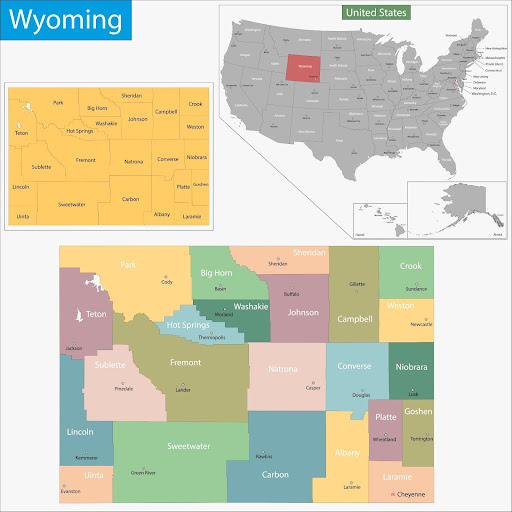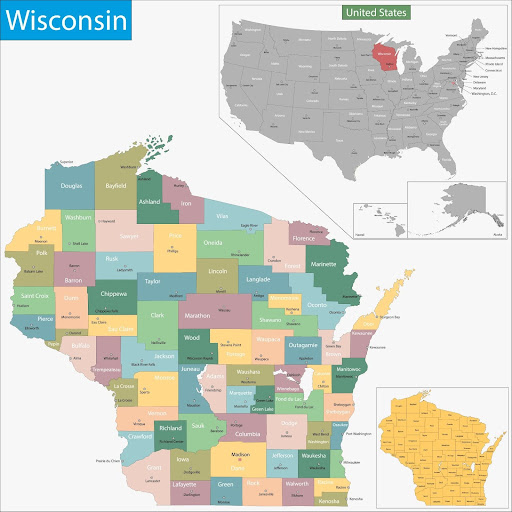Table of Contents
In Nevada, wildland fires are fueled by invasive grasses and fanned by desert winds. A single spark can travel miles across open range, skip roads, and shift direction with little warning. Fire investigation here often happens far from pavement, and the scene may stretch across state, federal, tribal, and private lands, sometimes all in one burn scar.
This guide breaks down Nevada’s wildland fire resources so you can hit the ground running. From live incident tracking tools and key agency contacts to regional fire behavior, training pipelines, and where to get help in the field, this is your tactical overview of how wildland fire works in Nevada, and who you’ll be working with when it does.
For a portable big-picture, start with wildland firefighting resources.
Live Incident Updates & Maps
Use this live tool to monitor real-time wildland fire activity across Nevada:
State Overview
Nevada is a land of extremes, desert basins, sagebrush steppe, alpine ranges, and sprawling federal lands. That diversity translates directly to fire behavior.
- Sagebrush-Dominated Valleys: Fast-spreading, wind-driven grass and brush fires are common. Flash fuels dry out early, creating early ignition windows.
- Pinyon-Juniper Woodlands: Found across the central part of the state, these areas experience crown fires and long-duration smolders that demand close post-incident monitoring.
- Great Basin Uplands: Remote, mountainous terrain can delay initial attack and complicate investigation access.
- Urban Interface (Reno, Las Vegas outskirts): As development pushes into wildland zones, structure fire dynamics increasingly blur into wildland incidents.
For fire investigators, this means adjusting protocols for highly variable fuel beds, jurisdictional complexity, and long access times.
Wildfire Season Timeline
Nevada’s fire season typically runs longer than most assume, with three distinct peaks:
- Early Summer (May–June): Lightning isn’t the driver yet. This is when human-caused ignitions dominate. Roadside starts, target shooting, and escaped debris burns are common.
- Monsoon Transition (July–August): Dry lightning storms sweep across central and northern Nevada. Investigators often respond to simultaneous starts from single weather events.
- Fall Wind Events (September–October): Downslope winds, particularly in western Nevada, drive fast-moving events into the WUI. Power infrastructure and machinery ignitions become more frequent.
Key State Agencies Involved
Nevada’s wildland fire system is deeply interwoven with federal partners. Understanding who manages what is critical to navigating investigations.
- Nevada Division of Forestry (NDF): Leads fire suppression and investigation on state and private lands (excluding incorporated cities). They manage inmate hand crews, aviation, and dispatch resources.
- Nevada State Fire Marshal Division: Oversees statewide fire investigation standards and may assist with origin/cause analysis on significant fires.
- Nevada Emergency Management (DEM): Coordinates interagency response, especially during red flag periods and large-scale mobilizations.
- Tribal Authorities: Nevada is home to several tribal nations, each with its own fire protocols. Investigators working on tribal land must coordinate through tribal emergency management or BIA partners.
- BLM Nevada: Manages over 48 million acres, more than two-thirds of the state. Investigators working near BLM jurisdiction should expect to follow federal investigation protocols and chain-of-custody standards.
- US Forest Service: Encompasses large sections of central and northern Nevada. Their Law Enforcement & Investigations (LEI) team oversees federal fire investigation protocols.
Local Wildland Firefighting Resources
In Nevada, initial attacks often begin with local responders. These crews bring essential intel, site familiarity, and scene preservation skills.
List of Local/State/Federal Fire Response Agencies
Expect to work with a wide range of responders, depending on location and incident scale:
- Nevada Division of Forestry (NDF): Facilitate interagency response and mutual aid. Investigators often coordinate with them for jurisdictional clarity and tactical briefings.
- Nevada State Fire Marshal Investigators: Available for significant wildland fires or those suspected of being incendiary. They help document scene evidence and conduct cause-and-origin analysis.
Rural Volunteer Fire Departments (VFDs): Especially vital in outlying counties like Elko, Nye, and White Pine. Many have limited wildland gear but offer early scene access. - County Fire Districts: Departments like East Fork Fire Protection District and Central Lyon Fire provide both suppression and investigative support, often with seasoned wildland staff.
- Local Law Enforcement: County sheriff’s offices are typically the first to secure scenes and may assist in ignition interviews.
- BLM and USFS: On federally managed lands, investigators must follow NWCG protocols. BLM law enforcement and USFS LEI handle all official federal cause determination and report documentation.
Contact Numbers and Emergency Links
- To Report a Wildfire in Nevada: Call 911
- Nevada Division of Forestry: (775) 684-2500 | https://forestry.nv.gov
- Great Basin Coordination Center (GBCC): (801) 531-5320 | https://gacc.nifc.gov/gbcc
- BLM Nevada Fire: https://www.blm.gov/programs/public-safety-and-fire/fire-and-aviation/regional-info/nevada
- Nevada Wildfire Awareness Campaign: https://www.livingwithfire.com
Training & Volunteering
Nevada offers targeted, NWCG-compliant wildland fire training through state and federal channels.
NWCG-Approved Academies and Centers
- Nevada Division of Forestry (NDF) Training Programs: The Nevada Division of Forestry offers various wildland fire training programs, including annual fireline safety and state investigation procedures. These programs are designed to equip firefighters with the necessary skills for effective wildfire suppression and investigation.
- Bureau of Land Management (BLM) Nevada Fire and Aviation Training: The BLM Nevada Fire and Aviation program manages extensive training resources across the state. With district offices in Elko, Winnemucca, Carson City, Ely, Las Vegas, and Battle Mountain, the BLM provides training for various firefighting roles, including Hotshot crews and aviation support.
- U.S. Forest Service – Humboldt-Toiyabe National Forest Training: The Humboldt-Toiyabe National Forest, the largest national forest in the lower 48 states, offers wildland fire training programs in coordination with other agencies. Training locations include offices in Austin, Carson City, Elko, Ely, Las Vegas, Sparks, Tonopah, Wells, and Winnemucca.
Volunteer and Seasonal Training Opportunities
- Emergency Firefighter (EFF) Program: NDF and BLM jointly recruit and train seasonal firefighters each spring. Entry-level EFFs often support investigations through mop-up and fire watch duties.
- Tribal Fire Training Initiatives: Many Nevada tribes run their own seasonal hiring and training pipelines, which include basic wildland modules and incident documentation instruction.
- Living With Fire Program: Offers public education and volunteer mitigation projects that may intersect with fire prevention or investigative interviews post-incident.
Stay Informed on Nevada’s Wildland Fire Landscape
Nevada’s wildfire terrain isn’t just dry, it’s dynamic. Years of megadrought, cheatgrass invasion, and expanding WUI zones are shifting how and where fires burn.
As a fire investigator, success means more than identifying an ignition source. It’s understanding fire ecology in a cheatgrass-dominated landscape. It’s knowing when monsoon-driven lightning storms tend to cluster. It’s collaborating, fast and effectively, with local responders, federal liaisons, and private landowners.
Stay nimble. Track evolving fuel conditions. And don’t underestimate how quickly a small start can sprawl across 10,000 acres of open range.
FAQs
How do I report a wildfire in Nevada?
Dial 911 immediately. For multi-jurisdictional or federal lands, reach out to the Great Basin Coordination Center at (801) 531-5320.
Can I conduct a controlled burn in Nevada?
Yes, but it requires a permit from your local fire protection district or the Nevada Division of Forestry. Burn bans may override issued permits during high-risk periods.
Who investigates wildfires in Nevada?
Responsibility depends on land jurisdiction.
- On state and private lands, NDF or the local fire authority leads.
- On federal lands, BLM or USFS investigators take charge.
- For multi-jurisdictional or suspicious fires, the State Fire Marshal may assist or lead.










